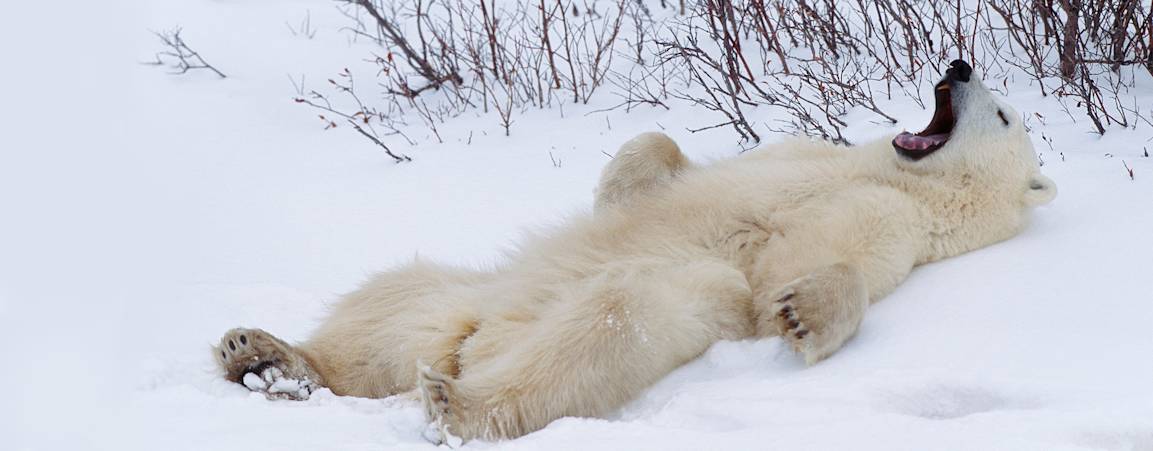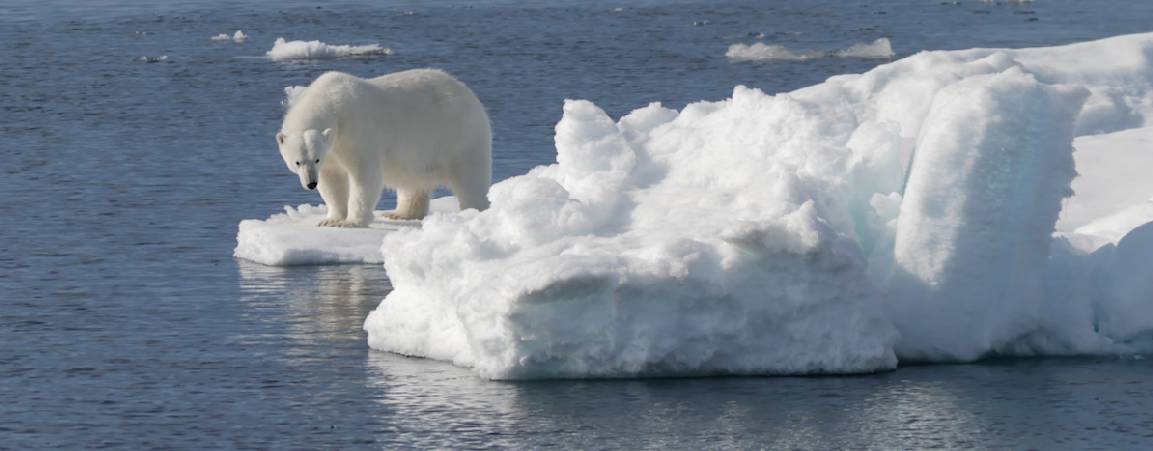Photo: Daniel J. Cox

Behavior
Learn how polar bears walk, sleep, communicate with each other, and stay clean.
Walking & Running
Polar bears have more problems with overheating than they do with cold. That's why they typically walk at a slow pace. They can run for a short distance—but quickly overheat.
Sleep Habits
Just like people, most polar bears sleep 7-8 hours at a stretch—and they take naps, too.
Polar bears nap just about anywhere, any time, and especially after feeding on a seal! Napping helps them conserve energy, since their entire existence centers around hunting, eating, and conserving energy.
Where They Sleep
In winter, polar bears sleep in shallow pits they dig in the snow, putting their sides or backs to the wind.
They can sleep right through blizzards. The snow piles up on top of them like an insulating blanket. Sometimes they stay curled up under the snow for several days until the storm passes.
In summer, polar bears curl up on the sea ice, sometimes using a block of ice or a paw as a pillow. Landlocked bears sleep on the tundra or dig sleeping pits in the sand or gravel ridges along the shore.
Staying Clean
Polar bears like to be clean and dry because matted, dirty, and wet fur is a poor insulator.
After feeding, polar bears head for open water and spend up to 15 minutes washing off, licking their paws, chests, and muzzles. They then dry themselves by shaking off excess water and rubbing their fur in the snow.
In winter, polar bears clean themselves with snow (and with water, when available). They also rub their heads in the snow, push forward on their tummies, and roll on their backs.
Polar bears are also known to groom chunks of ice from their paws to make walking more comfortable.
Mother polar bears lick their cubs to keep them clean. Cubs also lick themselves and each other.
Communicating
Polar bears communicate with each other through body language, vocalizations, and scent markings:
Head wagging from side to side: A sign that polar bears want to play. Adult bears initiate play—which is actually ritualized fighting or mock battling—by standing on their hind legs, chin lowered to their chests, with front paws hanging by their sides.
Nose-to-nose greetings: How a bear asks another bear for something, such as food. The guest bear will approach slowly, circle around a carcass, then meekly touch the feeding bear's nose.
Chuffing: A vocal response to stress, often heard when a mother bear is worried for her cubs' safety.
Scolding: Mother bears scold cubs with a low growl or soft cuff.
Rushing: When a male approaches a female with cubs, she rushes toward him with her head lowered.
Hissing, snorting, lowered head: Signifies aggression.
Loud roars or growls: Communicates anger.
Deep growls: Signifies a warning, perhaps in defense of food.
Charging forward, with head down and ears laid back: Attack mode.
Moving downwind of dominant bears: Signifies submission.
Cub Sounds
Distress: Cubs scream and cry when they’re distressed.
Discomfort: Cubs moan and groan when they've lost a teat or are experiencing discomfort.
Comfort: Cubs make "uhs," "ums" and related sounds when they are content.
Nursing Attempt: Polar bear cubs make this sound when attempting to nurse.
Nursing: The sound of a cub nursing is often described as "humming.”
Mother Sounds
Rest: Yes, mother polar bears snore—an indication of a resting and relaxed mom!
Stress: Stress vocalizations include panting, heavy breathing, and chuffing.
Grooming: Licking sounds are heard when a mother is grooming herself or her cubs, the sign of a relaxed state.

Feeling inspired?
Join us in our efforts to encourage leaders to make a swift transition away from fossil fuels and to renewable energy sources, by spreading awareness about the real and pressing threat of climate warming.









